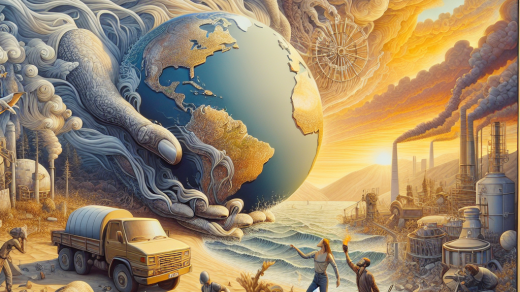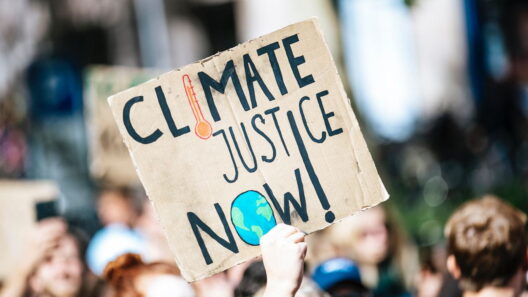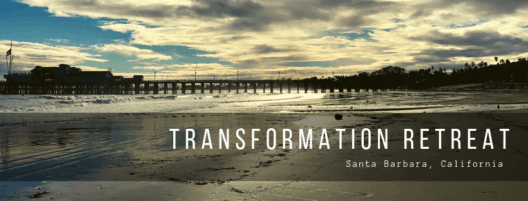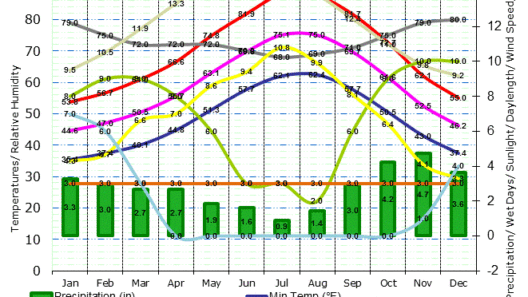The year 2029 is looming on the horizon, a temporal juncture that beckons humanity to confront an existential conundrum: the ever-accelerating climate crisis. As the metaphorical clock ticks down, the world finds itself standing at the precipice of unprecedented change, where the interplay of human activity and natural systems could either herald a new epoch of sustainability or lead to irrevocable environmental degradation. Like an orchestra poised to reach a crescendo, the planet’s climate is drawing together disparate notes into a symphonic narrative that reverberates through the very fabric of life.
The climate clock serves as a stark reminder; it is not merely a tool for tracking time but a harbinger of consequence. Each tick reverberates with the urgency of scientific reports warning that we are perilously close to surpassing critical thresholds. Should global temperatures rise above 1.5 degrees Celsius, the ramifications will be catastrophic. Biodiversity loss, extreme weather phenomena, and the melting of polar ice caps are just the overtures to a much graver symphony. The stark reality is that we are navigating a treacherous landscape where nature’s tolerance is waning, and the masquerade of stability we have historically enjoyed is fraying at the seams.
In 2029, the ramifications of climate inertia will likely be palpable. We can envision a world where cities are submerged, agricultural landscapes have morphed into arid wastelands, and the health of millions hangs by a thread. The migration of climate refugees may become an all-too-common sight, as individuals and families are displaced by floods, droughts, and extreme heat. The world may witness the emergence of ‘climate conflict’ as resources become scarce, igniting tensions that could fracture social fabrics globally.
The era of climate change is reminiscent of the fabled tale of the tortoise and the hare. While many have raced to deny the truth of climate science, others have been methodical in their understanding and response. The tortoise, representing those advocating for ecological responsibility and climate justice, reminds us that slow progress is still progress. From the grassroots movements igniting awareness to the policymakers grappling with legislative solutions, every incremental step counts, yet time is an unforgiving taskmaster.
While we contemplate 2029, let us not forget the formidable resilience of the natural world. Nature possesses an innate ability to adapt and regenerate, but it requires a concerted effort from humanity. Restoration of ecosystems that have been ravaged by industrial expansion and activism against pollutive practices will become paramount. The language of conservation must evolve into an eloquent narrative of rewilding, a renaissance of biodiversity that seeks to remedy human encroachment on wild terrains.
Technological innovation will also emerge as a crucial ally in combating climate change. In the race against time, renewable energy sources such as solar and wind are not just alternatives—they are transformative solutions. The proliferation of electric vehicles, advancements in carbon capture and storage, and the burgeoning field of sustainable agriculture epitomize the zeal for a greener future. 2029 could, ambitiously, become a benchmark for emission reductions and sustainability commitments that are unfathomable today.
Yet, this requires more than just technological prowess; it demands a seismic shift in collective consciousness. This moral awakening, a recognition that each individual has a role to play, is akin to awakening a dormant giant within society. People’s movements are powered by the unyielding belief that change is possible; they must galvanize political will and societal norms towards ecological stewardship. Imagine a world where every citizen is not merely a consumer but an informed advocate for planetary health.
However, the societal discourse surrounding climate action is crowded with narratives that often drift into complacency. The tragedy of the commons illustrates a profound dilemma: how individual interests frequently conflict with the collective good. Mobilizing communities to overcome this conundrum will necessitate grassroots education and outreach initiatives. The climate narrative must evolve from bleak statistics and daunting projections to an empowering vision of sustainability that ignites passion and determination.
In the face of adversity, the power of collaboration cannot be overstated. Multi-stakeholder partnerships, uniting governments, corporations, and civil society, stand poised as beacons of hope. Together, they can forge allegiances grounded in shared responsibility and collective action. These alliances should not be ephemeral gestures; they must catalyze transformative systems that are equitable and sustainable, ensuring that the benefits of climate action are distributed fairly.
As the clock ticks relentlessly towards 2029, the question becomes not whether change will occur, but how resiliently humanity will adapt to the challenges bestowed by our environment. Like a river that carves its path through the landscape, adaptation is not merely a response but an evolving journey. Transformative changes to our lifestyles, economies, and social structures must take precedence. The concept of a circular economy that minimizes waste and maximizes resource efficiency may very well become the underpinning philosophy of a sustainable future.
The allure of utopia—a world where harmony reigns between humanity and nature—can only be realized through concerted action anchored in science and compassion. In the shadows of impending crisis lies the opportunity for rebirth. The year 2029 poses potent questions about our legacy, urging us to abandon inertia and embrace responsibility. The quelling of uncertainty through proactive measures can illuminate a path that leads to adaptive resilience.
Ultimately, the ticking of the climate clock is an invitation—an invitation to transcend individualist tendencies and relate to each other and our planet. We stand at a critical junction where tomorrow can be crafted by the choices we make today. Let us rise to the occasion and allow the rhythm of action guide us towards a sustainable and equitable future for all, where Earth’s beauty is preserved and revered for generations to come.








